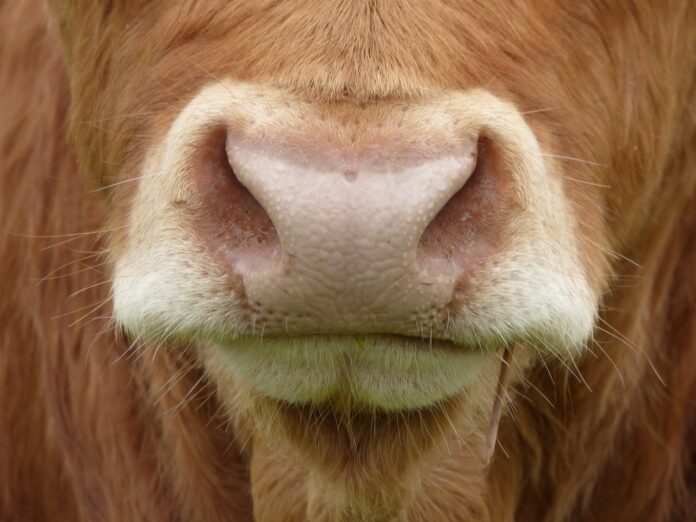Kilkenny RVL (Regional Veterinary Lab) confirmed a case of traumatic reticular-hepatitis in a seven-year-old cow.
The animal was showing signs of weakness prior to death and was submitted to Kilkenny RVL having failed to respond to treatment, according to an official report from the DAFM-approved lab.
On necropsy (examination of animal after death to determine the cause of mortality), there were adhesions between the reticulum, liver, and diaphragm, while the liver was “very autolysed” (the destruction of a cell by its own enzymes) but had fibrin tags on the surface.
There were multifocal purulent hepatic abscesses and foci of necrosis (death of body tissue).
Moreover, there was a sharp piece of wire, approximately 7cm in length, lodged in the liver at the site of inflammation and necrosis, and there were haemorrhages (loss of blood from damaged blood vessels) on the spleen and kidneys.
The lungs were congested (build-up of mucus, ect) and oedematous (abnormally swollen with fluid).
As part of its investigation, the lab cultured Trueperella pyogenes (bacteria species) from multiple organs.
The lab report, which is available in the Veterinary Ireland Journal, reads: “When metal foreign bodies perforate the reticulum, it can go in various different directions.”
“The pericardium (fluid-filled sac surrounding heart and roots of major blood vessels that extend from the heart) can be perforated (pierce with a hole or holes), causing pericarditis (swelling/irritation of pericardium).”
“However sometimes the perforation can occur laterally in the direction of the spleen (serves as an immune organ in cattle – responsible for filtering the blood of damaged red cells and microbes) or medially (towards middle or centre) towards the liver as occurred in this case,” the report added.
MCF in heifers
Last week, we published an article on a confirmed case of Malignant Catarrhal Fever (MCF) in a pair of 14-month-old heifers from the same herd that presented with the ‘head and eye form’ of the condition, three weeks apart, according to a lab report.
The herdowner had sheep lambing on the same holding in the period before the heifers presented with clinical signs, the Veterinary Ireland Journal notes.
Read more on this news article.
See more farming news on www.thatsfarming.com





